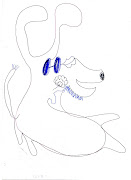TUCKMAN’S MODEL
Forming Stage
During our first meeting, all of us were careful with our words and restricted ourselves to a few ideas so as to ‘determine which types of behaviour are acceptable’ (Robbins, 1998 p. 242). Therefore, without much discussion, the meeting ended with delegation of tasks and the following agenda.
Storming Stage
The storming stage is one of intragroup conflict. On top of the nearing deadline, we had busy schedules which deemed impossible for us to meet up as often as we liked. It was frustrating as we had to keep changing and updating each other of our schedules before arriving at a compromised decision.
Norming Stage
Our group entered the norming stage whereby each of us become clear about our roles in the group and the duties assigned to us. Furthermore, group cohesiveness, “defined as the “we feeling” that binds the members of a group together”, formed as we learnt to think in different perspectives and being sensitive towards every member (Kinicki and Kreitner, 2003 p.205).
Team Cohesiveness
Three of the members were friends of many years hence there was member similarity, promoting better understanding. Also, relative to other groups of six, our group of five was small and hence it is easier to reach a state of agreement. Our members sit together during lectures and engage in active group discussions that the lecturer presents, hence there is constant member interaction.
Performing Stage
With the team cohesiveness, we found it easy to perform well in the tasks assigned to us. Unfortunately, Amal had to leave the team after receiving the letter of exemption from the management. We were demoralised and the team was thrown off balance inevitably. As a result, we backtracked to the norming stage. Due to short-handedness, we had to cope with more responsibilities and tasks had to be re-delegated.
Adjourning Stage
Finally, our team is able to come up with the report with the agreement of our ideas.
297 words
Forming Stage
During our first meeting, all of us were careful with our words and restricted ourselves to a few ideas so as to ‘determine which types of behaviour are acceptable’ (Robbins, 1998 p. 242). Therefore, without much discussion, the meeting ended with delegation of tasks and the following agenda.
Storming Stage
The storming stage is one of intragroup conflict. On top of the nearing deadline, we had busy schedules which deemed impossible for us to meet up as often as we liked. It was frustrating as we had to keep changing and updating each other of our schedules before arriving at a compromised decision.
Norming Stage
Our group entered the norming stage whereby each of us become clear about our roles in the group and the duties assigned to us. Furthermore, group cohesiveness, “defined as the “we feeling” that binds the members of a group together”, formed as we learnt to think in different perspectives and being sensitive towards every member (Kinicki and Kreitner, 2003 p.205).
Team Cohesiveness
Three of the members were friends of many years hence there was member similarity, promoting better understanding. Also, relative to other groups of six, our group of five was small and hence it is easier to reach a state of agreement. Our members sit together during lectures and engage in active group discussions that the lecturer presents, hence there is constant member interaction.
Performing Stage
With the team cohesiveness, we found it easy to perform well in the tasks assigned to us. Unfortunately, Amal had to leave the team after receiving the letter of exemption from the management. We were demoralised and the team was thrown off balance inevitably. As a result, we backtracked to the norming stage. Due to short-handedness, we had to cope with more responsibilities and tasks had to be re-delegated.
Adjourning Stage
Finally, our team is able to come up with the report with the agreement of our ideas.
297 words

No comments:
Post a Comment